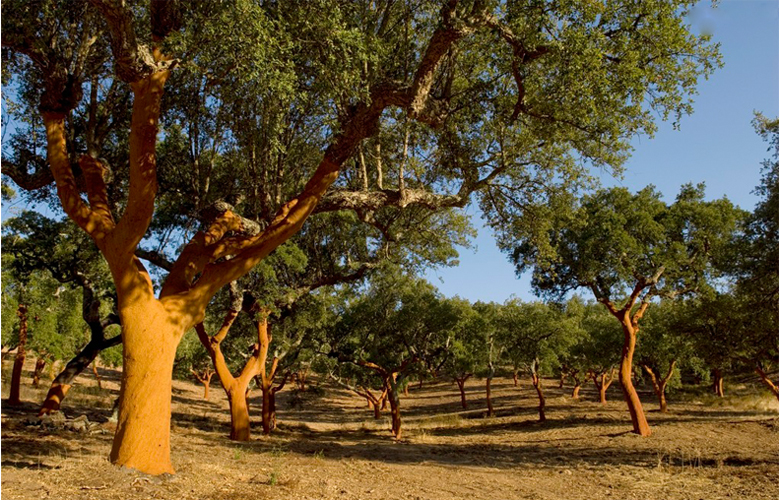Value of the Cork
Portugal is the world’s leading cork producer (185 tons, 54%) and is also a pioneer in the cork industry (68%).
As a valuable natural resource in Portugal, cork has become one of the most important export products in the world (3% total export volume, 1000 million Euros).
Since cork is sustainable and has been recycled throughout the production process, it will not have much impact on the environment in essence. With the growing concern about the environment, the value of the cork is also increasing rapidly, which is derived from its distinctive features: First, it can automatically repair tissue and grow new bark after harvest. Second, every time we cut, we don't do any harm to the growth of trees. Cork is, in general, a renewable natural resource.
Cork is a kind of pure natural polymer material, and among subtropical trees, only the bark of Quercus variabilis and Quercus sobers can be used to process cork products. The whole body of Quercus variabilis is a treasure, the leaves can raise silkworm, and the shell can be used to extract valuable raw materials Tannin of tannin extract. The fruit is good feed, wood is the advanced materials of construction and furniture, and the cork products made of its bark is a precious resource,which is called “soft-gold”and have a greater demand on the international market.
Application of the Cork
The Egyptians, Phoenicians and Persians began to use cork fishing floats, and it also be used to seal bottle and seal the roof of the building in 1000 BC. In Greece, it was found that the mouth of some Rome cans, including wine, was sealed with cork.
The most historic significance representative in promoting the use of cork is a clergy called D in France. In 1680, Pierre Pérrignon successfully created “champagne” for the first time, however, he found that the bottle cap will be popped out because of large amounts of gas impact if we use traditional wooden cap, so the cork is his best option. The cork also became the only choice of wine bottle stopper and played an irreplaceable role.
In 1863, the British Walton invented the linoleum.
In 1891, John Smith of America accidentally discovered a pure agglomerated cork.
In 1909, Charles invented synthetic agglomerated cork. The first cork bricks producer was a German company called Grunzweig & Hartmann.
In 1900, the Armstrong cork of America has their own partners, so they began to produce corkboard.

Address: No.4 Factory Building, Huangnigou Industrial Park, Yangting Town, Huancui District, Weihai City, Shandong Province
TEL:+86 0631 5332000
*Some pictures and contents of this website are from the Internet. The copyright is owned by the original author or the original company. If you think we have violated your copyright, please let us know and we will delete it immediately.





